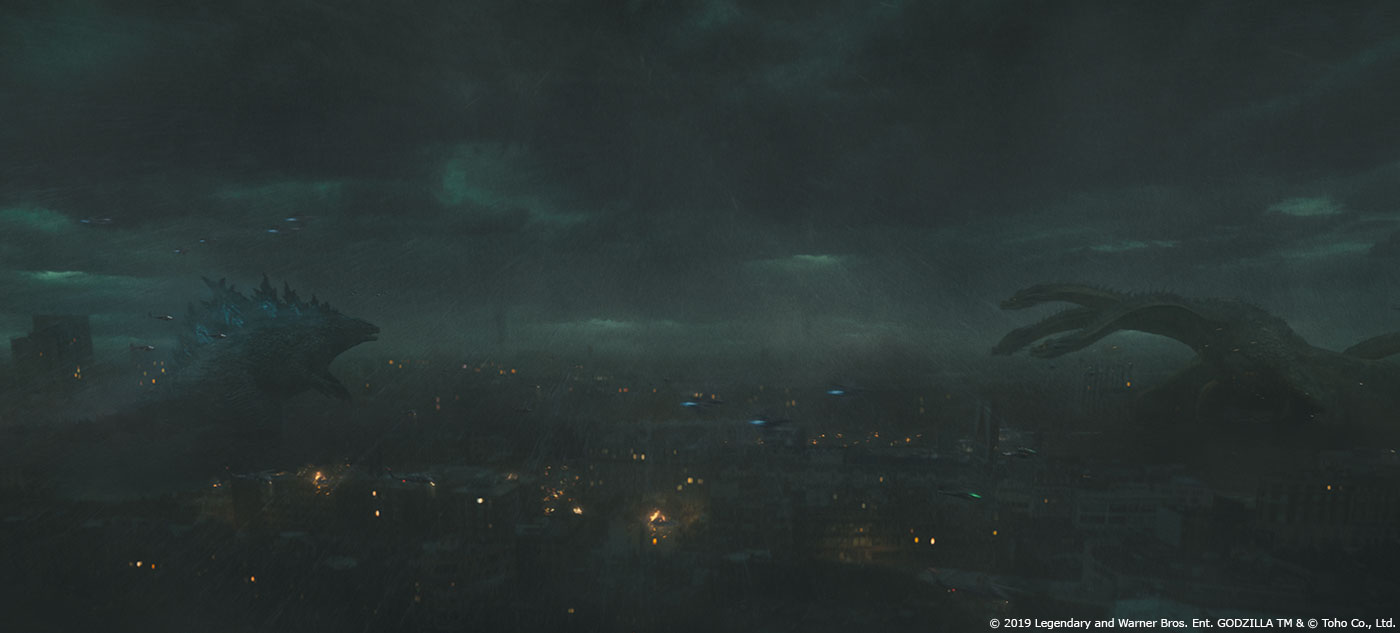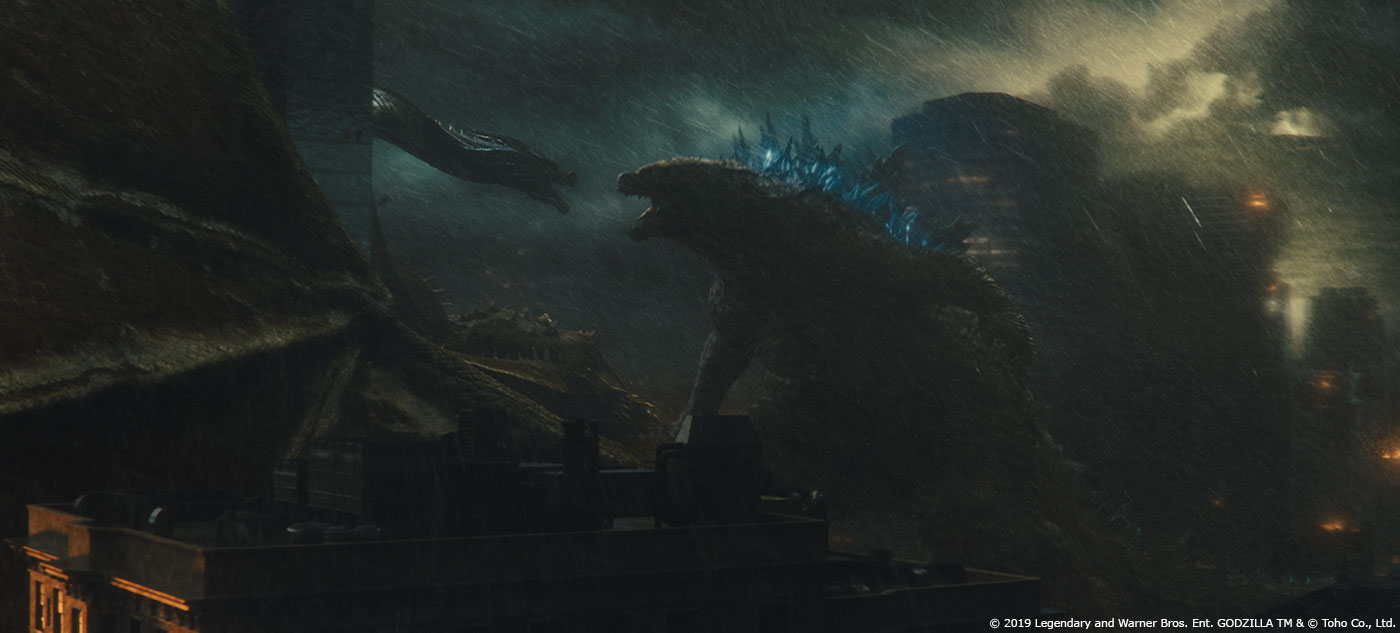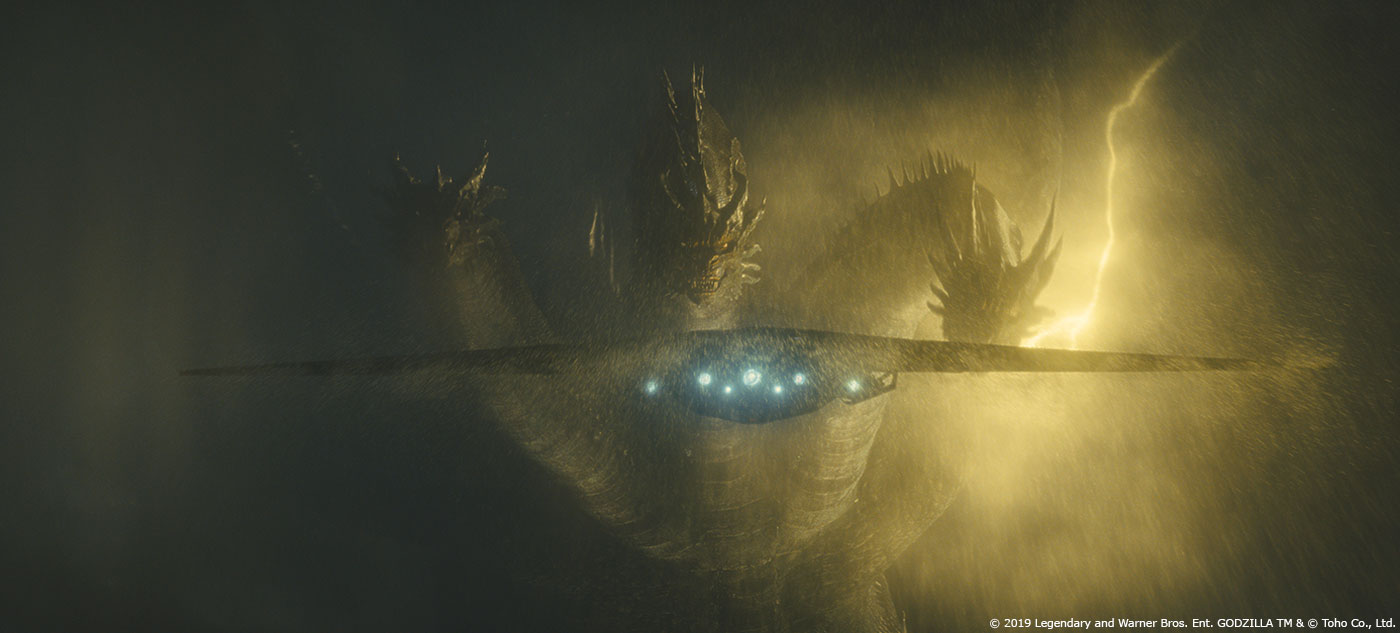Spencer Cook has more than 28 years of experience in the field of animation. He has worked in many studios such as Digital Domain, Sony Pictures Imageworks, Framestore and MPC. He has worked on films like THE MATRIX RELOADED, THE MATRIX REVOLUTIONS, MEN IN BLACK 3 and BEAUTY AND THE BEAST.
What is your background?
Animation was a hobby when I was a kid. I grew up watching monster movies like KING KONG, GODZILLA, all the classic Universal Monsters and basically anything fantasy, horror and Sci Fi. I was particularly inspired by the works of Ray Harryhausen.
By age 11, I was experimenting with stop-motion animation and had decided that I wanted to make my living as a stop-motion animator. I studied all aspects of film, video and fine arts at The School Of Visual Arts in New York City where I graduated with a Bachelor of Fine Arts degree.
After I graduating college I began my career as a stop motion animator. I animated and directed dozens of TV commercials in New York, Los Angeles and Europe over the next decade. I animated classic commercial characters like the Pillsbury Doughboy and segments of the Saturday morning TV series Pee Wee’s Playhouse.
By the late 90s I moved to Los Angeles and transitioned from stop-motion into digital animation. Since then I’ve worked on many Hollywood blockbusters including ALIEN: COVENANT, BEAUTY AND THE BEAST, MEN IN BLACK 3, MATRIX RELOADED and REVOLUTIONS, SPIDER-MAN 1, 2 and 3 and most recently GODZILLA: KING OF THE MONSTERS!
How did you get involved on this show?
The Legendary/Warner Bros MonsterVerse is a property that I had been tracking, it was my dream to work on a GODZILLA movie. MPC and I had been in touch over the years looking for a project that would be the right fit for both of us. Luckily, they contacted me when GODZILLA came up in Montreal and I immediately said YES!
What was your feeling to be part of the Godzilla universe?
I grew up watching GODZILLA movies, so this is one of the high points in my career. I’ve seen every GODZILLA movie and I’m especially fond of the first era of Toho movies (Showa era) from the original GODZILLA in 1954 to the mid-1970s. Those are the movies I’m most nostalgic about.
Godzilla is part of our modern mythology. The Toho movies span over 60 years and I’m extremely proud to be a part of the Godzilla cinematic legacy.
What were the Director expectations and approach about the visual effects?
The monsters are the stars of the movie. Our goal was to update the classic Toho monsters (Godzilla, Ghidorah, Rodan and Mothra) for a new generation while honoring the legacy.
This movie has a serious tone. Writer/Director Mike Doughtery wanted the monsters to be realistic creatures while keeping their classic features. One of the things we focused on in animation was visual clarity of the monster’s silhouettes. We wanted each monster to have a specific outline and body language so that, as Mike put it; a kid could draw any of them and it would be instantly recognizable.
Can you explain in detail about the animation work?
Early on we defined two main goals for the creature animation for GODZILLA: KING OF THE MONSTERS. Firstly, the monsters needed to feel real. Secondly, the monsters had to have personalities. I think one of the reasons the original Toho movies are so beloved, is because Godzilla and all the other monsters are alive with personality. Plus, Godzilla’s connection with humanity has been an important story element throughout the original franchise’s history and has carried over into these new movies. It was critical that the audience understands Godzilla’s thought process and intentions.
One of my jobs on this project was to find the best way to convey each monster’s personality through body language and limited facial expressions. It was a tricky combination because if we exaggerated the personality it could seem cartoonish but if we only focused on monster qualities, it wouldn’t connect with the audience. In character animation, we always look for ways to visually communicate with the audience by finding aesthetically interesting poses, which we call “appeal” and visual clarity through clear silhouettes and clean staging of the action.
We thought of the monsters as animals with personalities. In every shot we looked for the right balance of realistic animal mixed with human-like personality. Generally, it was 95% animal and 5% personality. In a few key shots we added extra personality. Early test screening audiences gave a consistent answer to the question, “Who is your favorite character in the movie?” The answer was always Godzilla. Hearing this feedback, the studio asked us to add more close ups of Godzilla. Mike defined a few key moments and we animated new shots to highlight Godzilla’s thought process and reactions.
Another part of my job was to keep the animators on track with the bigger picture of the story. The main questions I continually helped my team answer were; what is the intention of the creature’s performance? What is the story beat? What is the emotional beat? How does the shot fit into the continuity of the sequence?
What are the sequences made by MPC?
MPC Montreal was the lead vendor with 660 shots, we handled all the major monster sequences including the big monster fights. We did over 400 creature animation shots.
Did you receive specific indications and references for the animation?
We used famous actors and animals that corresponded to each monster’s personality.
Godzilla is part Clint Eastwood, a stoic classic movie tough guy, and part Muhammad Ali, a professional boxer who exudes confidence and skill. We mixed these qualities with grizzly bears and elephants to create the personae for the king of the monsters! We were also very conscious of Godzilla’s tail and back fins as a major component of his iconic silhouette.
Ghidorah is a cross between a wolf pack and snakes. For example, how wolves move together in a pack and look to the alpha for cues. We used this idea to have Ghidorah’s two side heads occasionally glance at the center head. The flowing S-shapes of the necks came from cobras and other venomous snakes. Humans are hardwired to sense danger when we see snakes coil and arch so we used that to make Ghidorah appear dangerous.
Rodan is a bird of prey, inspired by eagles, hawks, vultures and condors. Larger birds tend to flap less than smaller ones, so we generally had Rodan glide like a condor to help sell his massive scale. His personality is a hot-headed fire demon. His body language is sloppy, twitchy and asymmetrical. Actor reference included Jackie Earle Haley and David Patrick Kelly since they tend to play hot tempered, dangerous characters. Rodan’s wings never close completely, they drape like a heavy cape. Bela Lugosi’s famous Dracula pose is mixed into Rodan’s behavior as he rises out of the volcano. We also looked at the Night on Bald Mountain sequence from FANTASIA for inspiration in the volcano sequence.
Mothra is a divine creature. A spiritual presence for most of the movie. She’s feminine, deadly and precise. We used reference of insects like praying mantis, butterflies and moths. We mixed this with the body language of Chinese female martial artists. (CROUCHING TIGER, HIDDEN DRAGON and HOUSE OF FLYING DAGGERS). Actor references included Zyi Zhang (who played Dr. Chen in the movie), Michelle Yeoh and Maggie Cheung. The acrobatic action with flowing robes in martial arts films were great reference for power and beauty.
Performance Reference
For certain key sequences, we found it helpful to do a mocap session with professional performers. We weren’t looking for motion reference, we were looking for acting reference. We decided that it would be most useful to focus on Godzilla and Ghidorah since they have the biggest range of emotions and reactions. This was especially helpful with the three personalities of Ghidorah’s heads.
We shot the mocap sessions with multiple video cameras. The performers were wearing mocap suits and we captured the data knowing that we probably wouldn’t use any mocap data for final shots. All of the monsters were key frame animated. We only used video reference for animation. This gave us the freedom to choose how much human vs how much animal we mixed into the animation. The skill of the animator is in choosing how much of the reference to mix in with the fantasy to create a believable, living monster.
Mike directed the performers. This gave us a clear idea of the acting beats he was looking for. The video reference gave us a consistent performance to use in our animation.
In the case of Ghidorah’s heads, three guys acting like a monster isn’t a one to one performance for Ghidorah but it gave us interesting ideas for how to convey the emotion and intention of the shot. Some shots took a lot of experimentation to find the right mix of human, monster and animal.
As much as I love the original “man in suit” Godzilla movies, we didn’t want to replicate that. We wanted the monsters to be real animals. We picked specific moments from the video reference and then animated (key framed) the monster version of that human performance. It was a creative interpretation of the reference material, with the spirit of the original Godzilla movies woven in.
How did you manage the animation challenges with the massive size and when they are flying?
Generally, when animating any character or object, slow movements look big, and fast movements look small.
The physics of mass, momentum and inertia necessitate that something heavy in motion needs extra time to speed up or slow down. Basically, changes in direction need to be slow to visually convey massive weight and scale.
In animation terms, the monsters can move fast as long as the proper number of frames are used to ease in and out of an action. We used a lot of frames for the “anticipation” and “follow through” of every movement.
For the monster fights, we studied tons of nature videos of large animals fighting. Grizzly bears, elephants, hippos, sea lions, walruses. These multi-ton animals can move frighteningly fast when they need to.
In addition to animal reference, we studied videos of large construction machines like cranes, wrecking balls, building demolition and large scale natural events like mud slides, avalanches, and trees falling. These helped with ideas for how to visualize something big and heavy moving fast.
We made sure that every pose and action involves the entire body. Momentum builds from the core. It’s important to see the initiation of an action. This conveys the strength and effort it takes for such massive creatures to move.
Because of their tremendous height, we found it was important that the poses have a wide stance with a clear center of gravity. The monsters could easily look off balance if they weren’t centered.
For heavy action that stops hard, like when one monster hits another or, to a more subtle degree, takes a step, it’s important to see the dissipation of the momentum. We show that visually by sequential shudders traveling through the body. We had shake controls in the rig for legs and body that we could keyframe. FX animation added many more layers of muscle and skin movement to help sell the massive scale.
Can you tell us more about their rigging – especially about Ghidorah?
The creature design and rigging went hand in hand. Early animation tests helped inform design and function. Even though these are fantastical creatures we wanted the anatomical details to be realistic.
Ghidorah was by far the most difficult monster to design and animate. Three heads with distinct personalities, two tails and massive wings made it a unique challenge. Mike specified that Ghidorah is not like a traditional Western dragon. In animation we generally avoided looking at dragons from other movies. We tried to incorporate a lot of snake-like movements.
Three face rigs on one creature considerably slowed down the animation workflow. Technically cumbersome rigs can take the animator away from the creative process. As with most rigs today, we had low resolution versions with simplified geometry. This made it easier to block out shots quickly then we could swap in higher resolution rigs for presentation. We had the option to hide the wings, which allowed us to focus on body mechanics. We could also plug in one face rig at a time. The animator could work on each face separately then bring in all three to playblast and evaluate as a whole.
Many Ghidorah shots were impossible to pose with the heads and tails attached to the body. We made separate heads and tails that could be placed as needed. This was especially helpful in tight shots where the composition needed to be cheated.
Godzilla’s classic silhouette with the recognizable back fins and tail was a constant consideration in how we posed him in each shot. We were very specific about the line of action and tried to keep a clean S curve that flowed from head to tail. The animation controls were kept simple and ran from his head to the tip of his tail. Animators could turn on a secondary layer of controls when finer adjustments were needed.
Rodan’s design concept of fossilized feathers and dried lava took us some time to get right. He needed to be flexible enough to be a deadly bird of prey while maintaining a certain amount of stiffness. His wing structure looks similar to a pterodactyl but we rigged the bone structure to be more like a bat. This gave us more control in poses because of the way a bat’s finger bones fan out through the wing membrane. His bird-like qualities extended to the face. A stiff beak meant limited face controls. We cheated some flexibility into the face but tried to keep it as stiff as possible while still being able to read expressions.
Mothra’s insect face gave us limited options for facial expressions. We mainly relied on body language to sell her personality but occasionally adjusted her eye shapes to help convey emotions.
We cheated the scale of the monsters throughout the movie depending on the needs of each shot. We had three preset scales in each rig. For example, Godzilla’s default scale is 400 feet but we could shrink him to 300 feet or grow him to 600 feet. Another example is Rodan. He’s scaled bigger in the jet chase and smaller for the Boston sequence.
Which sequence or shot was the most challenging?
Anything with Ghidorah was the most challenging.
Was there something specific that gave you some really short nights?
The schedule is always a concern for big projects like this. Character animation doesn’t easily fit into a factory style process. It oftentimes requires experimentation to find the best version of a shot. It’s a tricky balance between the creative and the schedule but that’s our job as professionals and we work very hard to make both happen.
What is your favorite shot or sequence?
I like the sequences where Godzilla and Ghidorah face off and charge at each other. These two monsters have battled in so many movies before. It was an incredible thrill update their legendary rivalry.
I also love the scenes where Godzilla makes an entrance. The way Mike designed those moments are so grand and theatrical. They give me chills every time.
What is your best memory on this show?
My best memories are working with my animation team. This felt like a special project right from the start. Everyone was so enthusiastic. My team was a mix of Godzilla fans like myself and younger animators who hadn’t seen a classic Godzilla movie before. I screened the original Godzilla for my team and regularly showed clips from classic Toho movies each week. I made it a point to impress upon everyone that we are part of an incredible cinematic legacy. Every day before dailies I played a short clip from one of the classic Mothra movies of the twin fairies singing the Mothra song. It became a tradition throughout the entire production. Today every animator on my Godzilla team can sing the Mothra song!
How long have you worked on this show?
A little over a year.
What was the size of your team?
It varied throughout the production, but the average was around 40 animators.
What is your next project?
I’m currently the Animation Director at DNEG. It’s too early to announce anything specific but we have some exciting creature projects in the works.
What are the four movies that gave you the passion for cinema?
Since I’m a movie buff from a young age, it’s impossible to pick four but here are a few major influences on me.
KING KONG (1933)
All Ray Harryhausen movies, especially THE 7TH VOYAGE OF SINBAD (1958)
All Toho monster movies
THE WIZARD OF OZ (1939)
DOUBLE INDEMNITY (1944)
THE SEARCHERS (1956)
NORTH BY NORTHWEST (1959)
MARY POPPINS (1964)
THE EXORCIST (1973)
JAWS (1975)
STAR WARS (1977)
CLOSE ENCOUNTERS OF THE THIRD KIND (1977)
THE THING (1951 and 1982)
GHOSTBUSTERS (1984)
JURASSIC PARK (1993)
THE AVENGERS (2012)
A big thanks for your time.
WANT TO KNOW MORE?
Guillaume Rocheron: My interview of Guillaume Rocheron, Overall VFX Supervisor at MPC.
MPC: Dedicated page about GODZILLA: KING OF THE MONSTERS on MPC website.
© Vincent Frei – The Art of VFX – 2019







